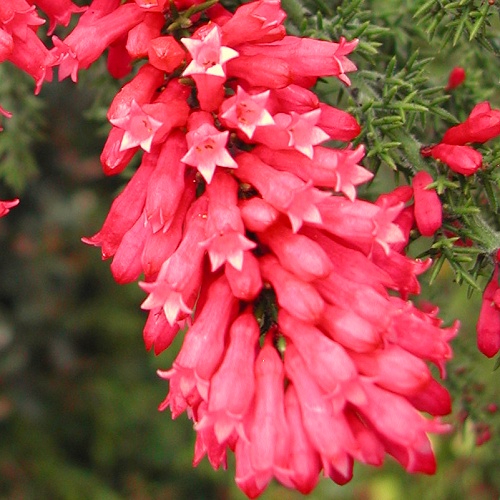Germinating the seeds
When to plant -- Plant your seeds when you receive them for the best results Getting started -- Scrape each seed a few times over coarse sandpaper or a nail file. Then soak them in a cup of water for 1 to 2 days (not more than 2 days). For soil, use a well draining
mix. I use a mix of 1 part
coir fiber Use small pots or cups that have drainage holes. Fill them with soil, place a seed on top, and cover with 1/4 inch (7 mm) of soil. Add water until the soil is evenly moist (but not soggy). The seeds germinate best after 6 weeks of cool nights (below 50°F / 10°C), to simulate the passage of winter. An easy way to do this is to place them in the refrigerator, provided that it stays above freezing. Enclose the pots in a plastic bag or container, and mark your calendar to remove them after 6-8 weeks. After removing them from the refrigerator, keep the pots between
68-78 degrees F (20-26 Celsius). A little cooler at night is ok. I recommend placing a
minimum/maximum thermometer The seeds sprout at various times, beginning any time after the first month, and continuing for 6 months. Be patient with them and most will eventually sprout. Once they sprout, give them bright light, such as morning sun, filtered sun, or fluorescent or LED lighting. Protect them from strong afternoon sun the first few months. Watering -- Aim to keep the soil evenly moist (but not constantly saturated). After the first year, they can tolerate drier soil. Climate -- The plant comes from low- to mid-elevations in Chile, where summers are warm and nights are cool. It's possible that hot days with warm nights could stress it, but i suspect it can adapt. It can handle a few degrees of frost (-4°C), but it's best to protect it from prolonged frost, especially when young. I would protect them from very high or low temperatures the first 6-12 months. Fertilizing -- The first 3 months, feed every 10 days with
a small amount of dilute liquid fertilizer (1/8 strength).
Hydroponic fertilizer
is ideal for small seedlings, because it is easily absorbed and contains all
essential nutrients. After 3 months, you may switch
to a
granular fertilizer Repotting -- When the seedlings are 2 inches (5 cm) tall, they may gently transferred to bigger pots. Water the plant well before repotting, to keep the soil from breaking apart, which can damage the roots. If the soil ball does break apart, shade the plants from afternoon sun the first 2-3 weeks. Repot into cactus soil or similar fast draining soil. If you live in a high rainfall area, use ample perlite or coarse horticultural sand in your mix. Bugs to watch for -- Not usually bothered by pests. Indoors, watch for spider mites and mealy bugs. If any questions or problems come up, feel free to contact me. Have fun growing them! - Jeff Strange Wonderful Things
|
|||||||||


